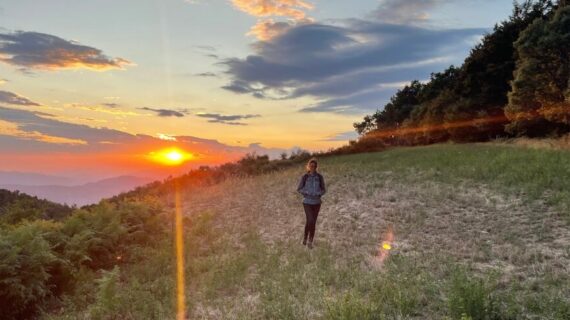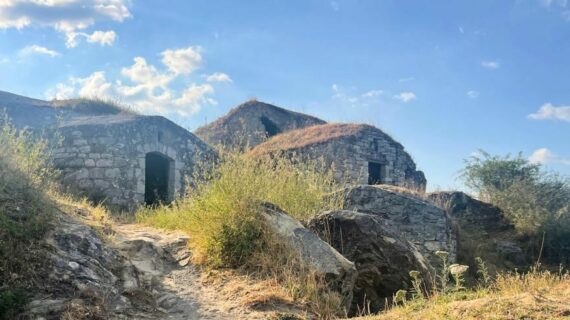Join us on a breathtaking hike through Pollino National Park, Italy’s largest national park, featuring stunning landscapes, ancient loricate pines, and unforgettable views. Discover the magic of Serra di Crispo, the Garden of the Gods.
An amazing hike through Pollino National Park. This is how I discovered Basilicata and its magnificent Pollino Park. It’s the largest national park in Italy, spanning both Basilicata and Calabria, covering nearly two thousand hectares of trails, gorges, forests, streams, cliffs, mountains, small villages, castles, monasteries, and sanctuaries. Since 2015, it has been recognized as a UNESCO natural heritage site.
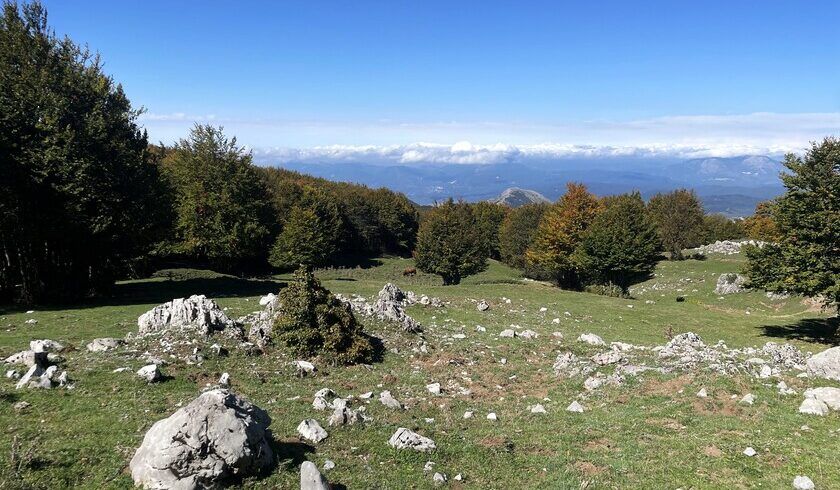
The park features a vast mountain range of five peaks, some of the highest in southern Italy, nestled between the Ionian and Tyrrhenian seas. It’s an ideal place for hiking, trekking, via ferrata, climbing, caving, snowshoeing, rafting, canyoning, cross-country skiing, and mountain biking. Nature here is lush and thriving, with an abundance of flora, fauna, and wild medicinal and aromatic plants.
Want to follow me along the trail that leads to the ridge, where we’ll discover the high-altitude loricate pines, surrounded by a legendary landscape? Let’s go!
The Trail to Serra di Crispo
A diverse and close-knit group was one of the many gifts of this tour. Bloggers, travel designers, tour operators, content creators, and photographers were my extraordinary companions in this stunning location. Along with our professional guides, Leonardo Viceconte and Saverio Indio, who were attentive and highly knowledgeable, we set off from the Rifugio Pino Loricato. This popular spot, located at 1,537 meters above sea level, is accessible even by a four-wheel-drive vehicle.
All the trails in the massif are well-marked, and the trek to Serra di Crispo is an 11-kilometer circular route. It takes about five hours to complete with an elevation gain of 500 to 600 meters. The path is not particularly difficult.
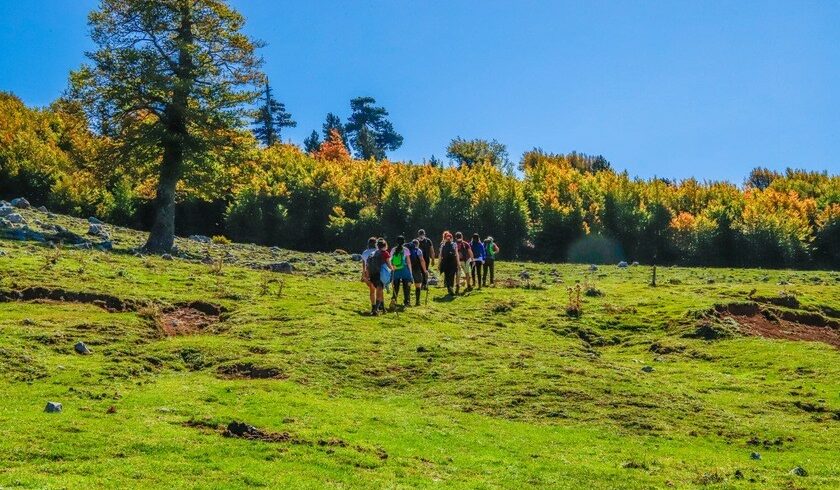
Equipped with trekking shoes, backpacks, water bottles, and layers of clothing, we began our hike. Along the way, we encountered specimens of silver fir (Abies alba), maples, chestnuts, and the many beech trees typical of the area, as well as various flowers like gentians and buttercups. We crossed high-altitude meadows and spotted grazing horses. The forest was already dressed in autumn colors—red, yellow, and brown. The scent of moss filled the air, and the ground had become a magical kingdom for various mushroom species, from delicious porcini to the poisonous Amanita muscaria (definitely not foraging or tasting!).
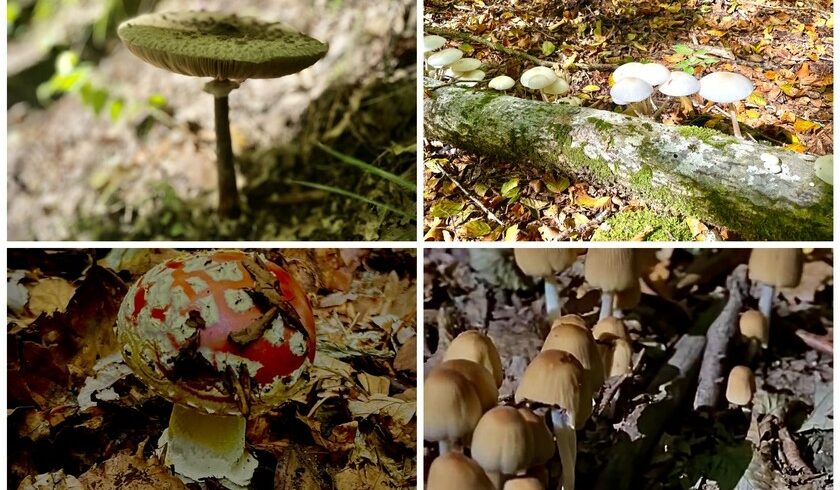
Our guide Leonardo explained that each season brings a different but equally spectacular landscape, with unique flowers, colors, and experiences. In winter, when it snows, the mountain becomes a vast white blanket—perfect for skiing. In spring and summer, the area blooms with wildflowers, and the longer, sunnier days allow for exploration of trails and waterfalls.
The Magic at the Summit
When we reached the summit, our eyes widened at the breathtaking view: a stunning panorama where we could see the profile of the Ionian coast, from Taranto to Sibari, and even spot the sea.
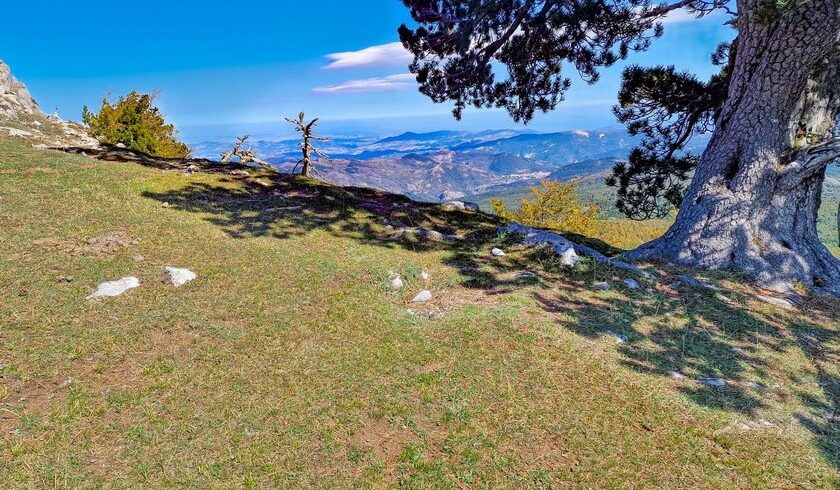
Serra di Crispo’s ridge is known as the “Garden of the Gods,” and it’s easy to see why. The enchanting atmosphere and the majestic peace among the towering pines, make it feel like the home of some mythological deity. It’s a fascinating place where ancient loricate pines thrive.
At the top, we couldn’t resist a little pic-nic: we enjoyed local Lucanian taralli (typical local bisquits), unforgettable with their elongated shape, light and crunchy flavor, and fennel seeds, accompanied by a toast with wine generously provided by Leonardo.

The Park’s Emblem: The Majestic Loricate Pine
The standout feature of this region is the park’s absolute protagonist, towering over the Garden of the Gods: the loricate pine. This protected species is reason enough to visit Basilicata. Unique and rare in Italy, it’s considered a living fossil. Some of these millennia-old conifers thrive in harsh environments and rocky soils, giving them a sculptural and imposing appearance. Over their long lives, they can reach heights of 40 meters and diameters of more than a meter.
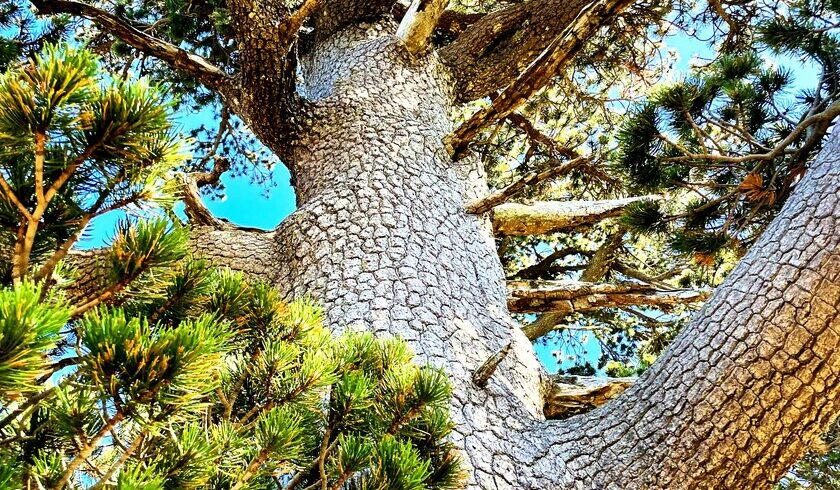
The tree’s name comes from its thick, ash-gray bark, which features wide, plate-like fissures that resemble a lorica, the armor worn by ancient Roman soldiers. This natural armor has allowed the pine to survive at high altitudes and in tough climatic conditions. It’s the only tree that can grow above the beech tree line. Now the logo of the park, this tree has become an icon of the entire Lucanian region and a symbol of Basilicata.
The Sanctuary of Maria Santissima del Pollino
After descending from the ridge, we returned to the Rifugio Pino Loricato. As often happens in the mountains, clouds and rain quickly replaced the clear blue sky and warm sun. It was the perfect setting to enjoy a hearty meal of local delicacies at the refuge, which gave us much-needed rest after our high-altitude trek.
After the cheerful and delicious lunch, we headed to the Sanctuary of Maria Santissima del Pollino. This religious structure dates back to the 1700s when the Virgin appeared to be a shepherd at this very spot. The statue of the Madonna del Pollino is carried by pilgrims from the village of San Severino in a solemn procession between July and September, accompanied by celebrations of dancing, singing, camping, and prayers.

Near the sanctuary stands a bronze statue of the Madonna del Pollino, created by Dutch artist Daphné Du Barry, depicted offering the child to the valley. Despite the clouds, we enjoyed the incredible panorama stretching over Serra del Prete, Serra di Viggianello, Colle dell’Impiso, and Colle del Grattacielo.
Farewell to Pollino National Park
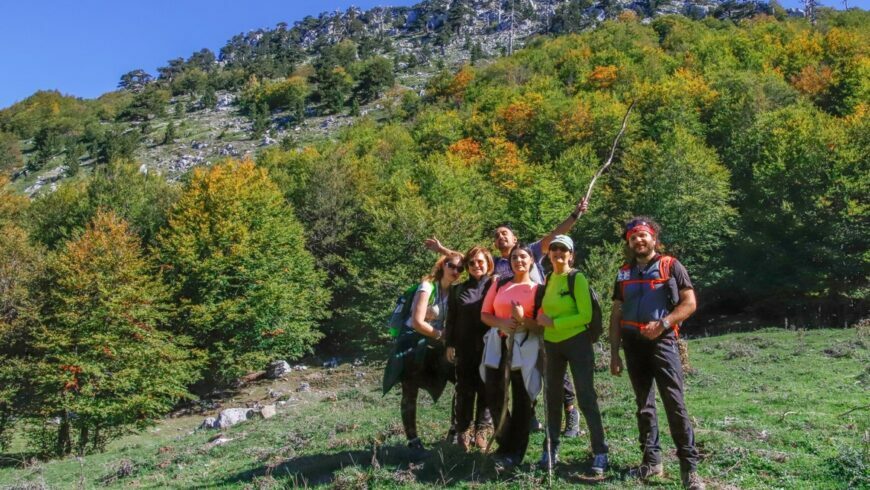
We spent a day full of emotions and beauty, exploring a naturalistic path at the heart of Basilicata. It was just a taste of the many opportunities Pollino National Park offers.
Don’t miss this authentic and wild Lucanian gem, perfect for all kinds of adventures. Don’t miss the chance to experience true nature, where you can find peace, freedom, andstrength.
Goodbye, Basilicata—I’m sure we’ll meet again soon.
If you share my love for this land, feel free to comment. And if you don’t know this region yet, take the opportunity to visit it—I’m sure it will surprise you.
This trek to Serra di Crispo, exploring the Garden of the Gods and Pollino National Park, was organized by Marmo Melandro Viaggi, in collaboration with Viaggi del Milione, as part of the Educational Tour Basilicata Slow. The event promotes slow and sustainable tourism in the Lucanian region, highlighting its authentic immersion in nature, culture, art, food, and traditions.
Author: Cecilia Vecchi
Cover Image: Pollino Park, Photo by Vittorio de Santis

 Francesco Palazzo – Green Bed & Breakfast in Viggianello, Provincia di Potenza, Basilicata, IT
Francesco Palazzo – Green Bed & Breakfast in Viggianello, Provincia di Potenza, Basilicata, IT  Lavinium Albergo Diffuso – Green Albergo diffuso in Laino Castello, Cosenza, Calabria, IT
Lavinium Albergo Diffuso – Green Albergo diffuso in Laino Castello, Cosenza, Calabria, IT 

